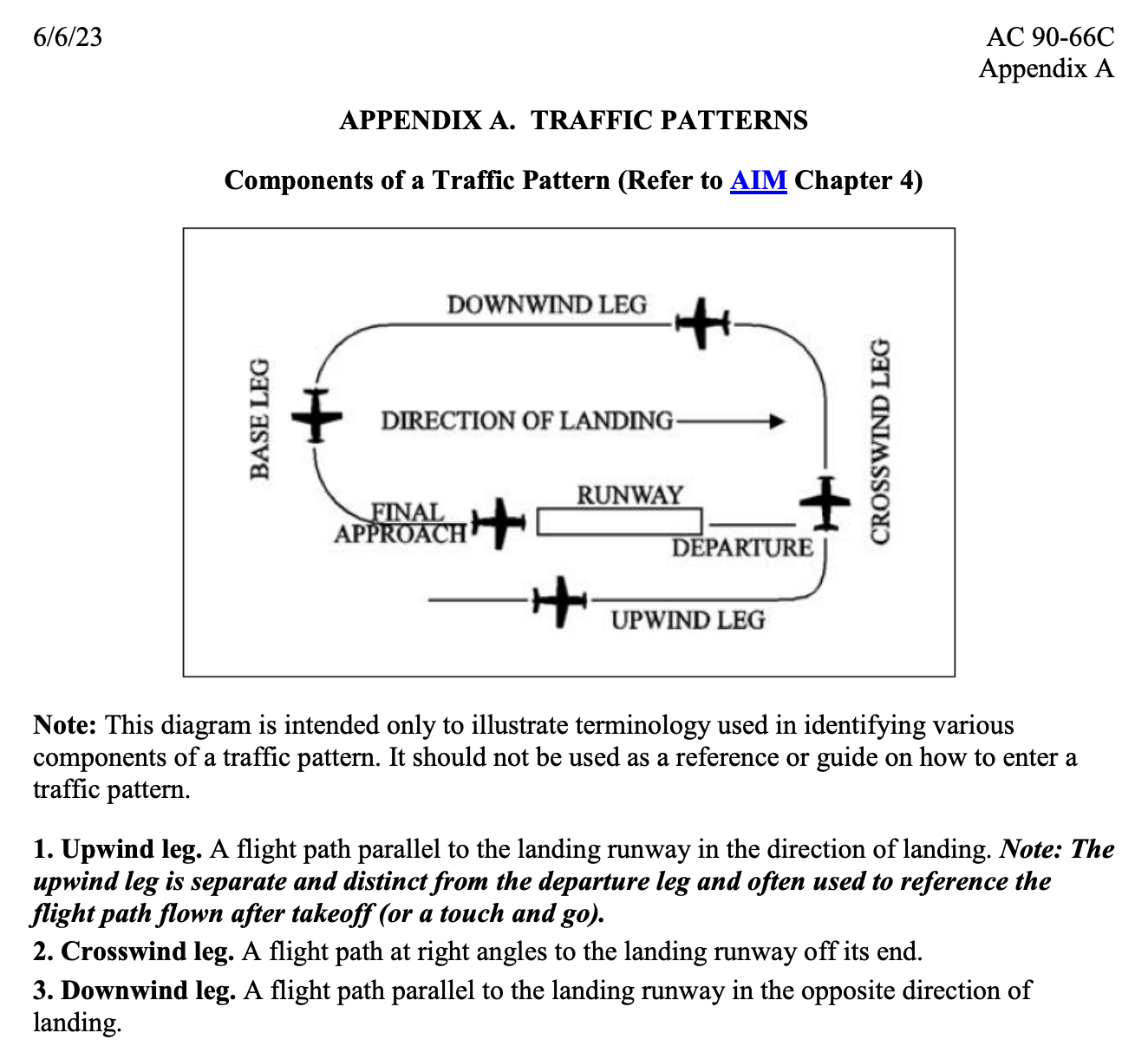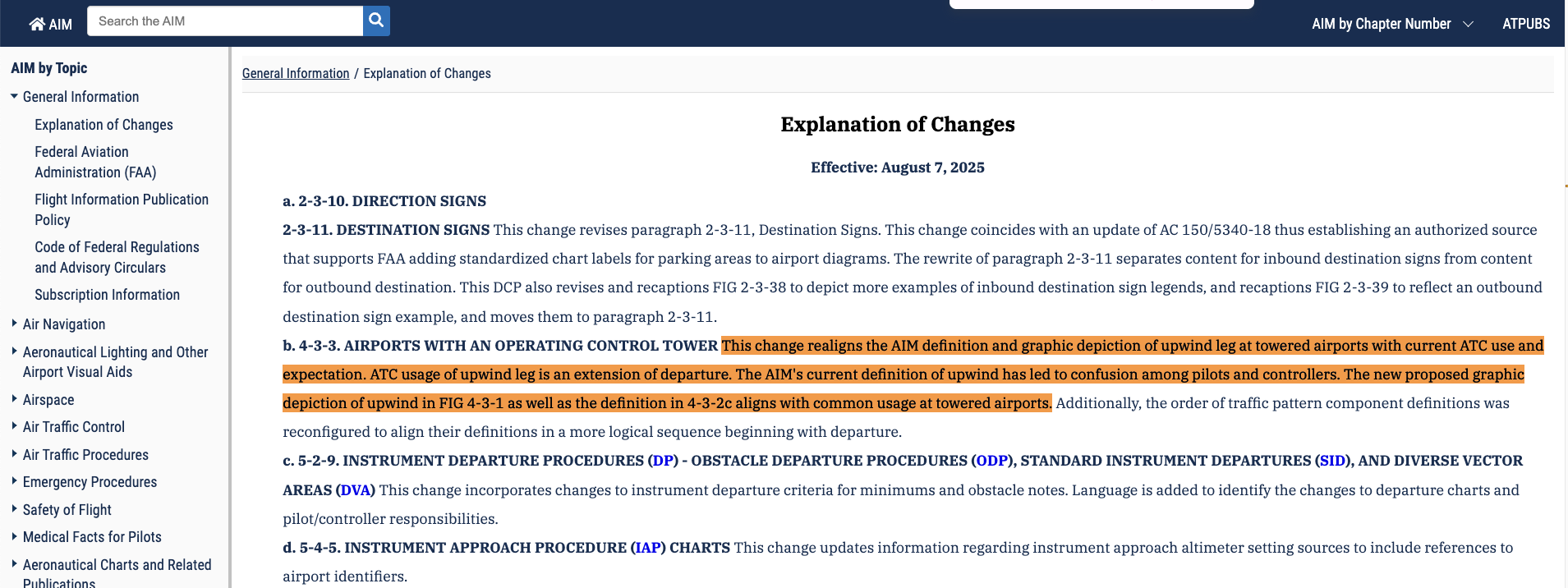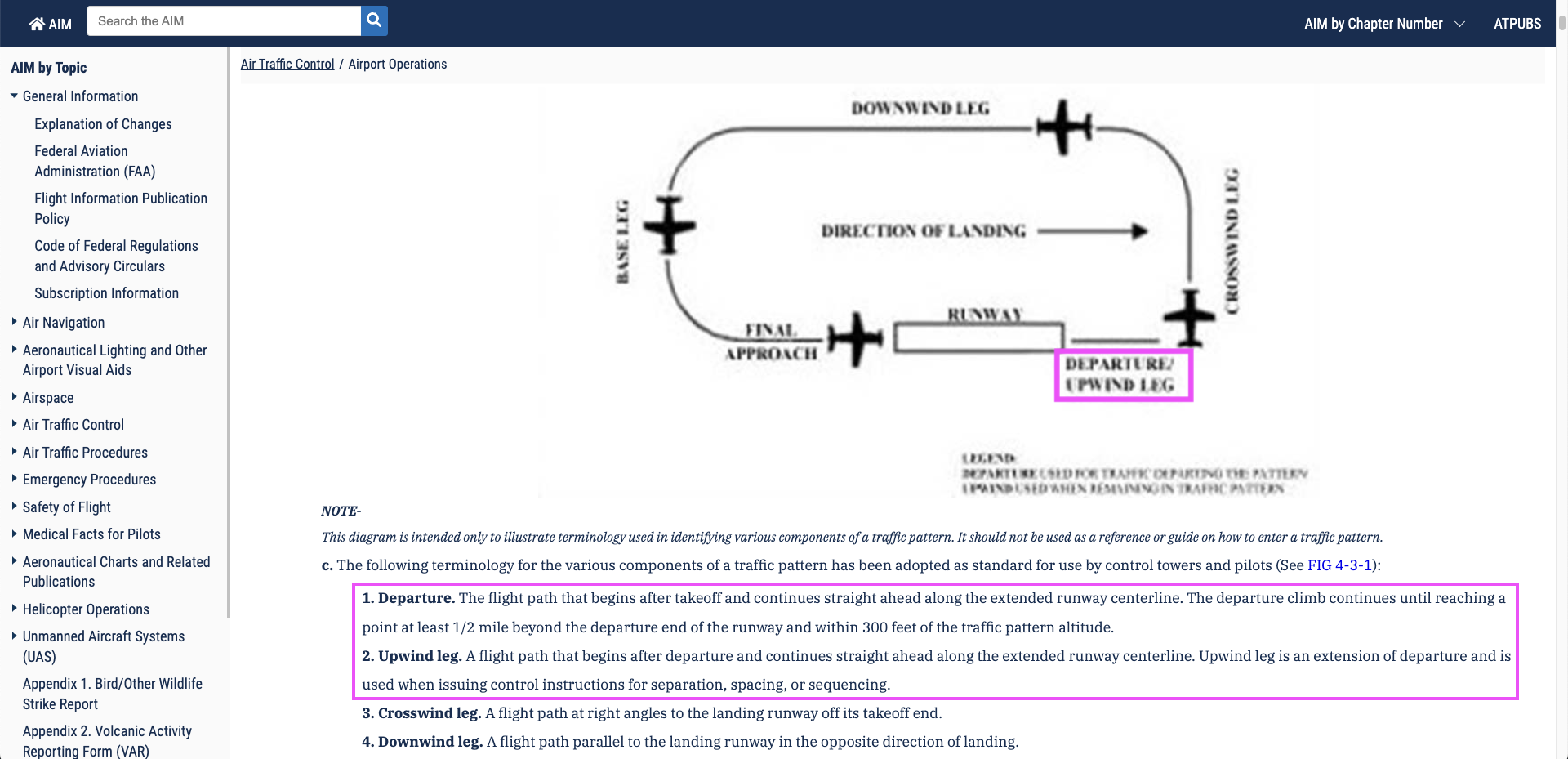
No More Confusion: Departure vs. Upwind Leg in the Traffic Pattern
Intro
The Confusion Ends: Find out how the new AIM update permanently resolves the debate between the Departure and Upwind Legs.
TL;DR;
- Effective: August 7, 2025
- The Departure Leg is the segment flown from the start of the takeoff roll until the initial turn (either crosswind or a departure turn) is executed.
- The Upwind Leg is the segment flown when the pilot does not turn crosswind after the initial departure, but instead continues straight ahead along the extended runway centerline.
- Going forward, when Air Traffic Control (ATC) instructs you to “extend upwind,” you know the exact procedure: you simply continue flying straight ahead along the extended runway centerline.
Old Confusing Definition of Upwind and Departure Leg in AIM (Before Update)
I sourced this material from AC 90-66C, which appears not to reflect the AIM update of August 7, 2025.

The term “Extend Upwind” caused significant confusion among pilots and CFIs before the AIM definition was clarified. When ATC used the term, they usually intended for the pilot to continue straight ahead along the extended runway centerline (an extended departure leg).
However, pilots familiar with older AIM definitions often misinterpreted “Upwind Leg” as flying parallel to the runway but offset and opposite the landing direction, outside the standard traffic pattern circuit.
While it is highly unlikely that any pilot actually flew the complete, incorrect Upwind Leg in response to an ATC instruction, this ambiguity undoubtedly created a moment of brief confusion and hesitation in the cockpit as the pilot tried to reconcile the ATC instruction with the manual’s definition. The subsequent AIM update successfully aligned the definition with the common operational practice.
AIM Updates (Aug 7th, 2025)
Detailed explanation about the updates are well written here [AIM] Explanation of Changes. What I’d like to talk about in this article is [AIM][4-3-2] Airports with an Operating Control Tower this.

This change realigns the AIM definition and graphic depiction of upwind leg at towered airports with current ATC use and expectation. ATC usage of upwind leg is an extension of departure. The AIM’s current definition of upwind has led to confusion among pilots and controllers. The new proposed graphic depiction of upwind in FIG 4-3-1 as well as the definition in 4-3-2c aligns with common usage at towered airports.
What’s Updated? -> [4-3-2] Airports with an Operating Control Tower
FIG 4-3-1 and Definitions in 4-3-2c are the main updates about Departure and Upwind leg confusion.

- Departure: The flight path that begins after takeoff and continues straight ahead along the extended runway centerline. The departure climb continues until reaching a point at least 1/2 mile beyond the departure end of the runway and within 300 feet of the traffic pattern altitude.
- Upwind leg: A flight path that begins after departure and continues straight ahead along the extended runway centerline. Upwind leg is an extension of departure and is used when issuing control instructions for separation, spacing, or sequencing.
Summary of Updates
- The Departure Leg is the segment flown from the start of the takeoff roll until the initial turn (either crosswind or a departure turn) is executed.
- The Upwind Leg is the segment flown when the pilot does not turn crosswind after the initial departure, but instead continues straight ahead along the extended runway centerline.
- Going forward, when Air Traffic Control (ATC) instructs you to “extend upwind,” you know the exact procedure: you simply continue flying straight ahead along the extended runway centerline.